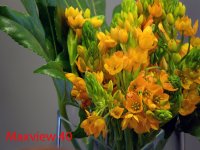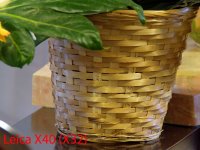yossi
Well-known member
I had the camera briefly for a quick test for digiscoping use.
My initial impressions are the following:
1. it's a very small camera loaded with a lot of features, including Nikon's D-lighting which is available in the D80 for example. This is adding electronic illumination to a pre-shot image without deleting the original file on the card.
2. Even at iso 80 there's some visible noise. One can live with it, but Nikon could have done better.
3. The EVF (electronic viewfinder) is quite detailed, but the lens in front of it (the ocular) is of low quality, showing some CA. It's very effective in a harsh sun.
4. The tripod socket looks as it's made of plastic. Boooo....
I used Nikon's Universal bracket for testing. The scope I used was the Leica Apo 62 with three eyepieces (my favorite scope). The results are confusing...
With the Leica x40 (x32) EP the image was perfect in the widest zoom position (36mm), no vignetting and very sharp. The combined focal length was 1152mm (32x36). Zooming in created at several points of the zoom setting some vignetting, that was almost completely gone at full tele (180mm) with quite a dark image on the screen. Combined focal length was 6480mm. Sharpness at this point was not very good, but I've made the test in the evening and a very long exposure time.
With the Leica X20-60 (X16-48) EP there was vignetting all over the zoom range, but at most of the range it can be cropped out.
With the Scopetronics Maxview 40 for Leica - at the widest setting the vignetting was terrible - like looking through a pipe. From about 80mm to full tele (180mm) the picture was very good, no vignetting (combined focal lengths was 880-1980mm).
It's a weird behavior IMHO and is a result of the x5 times optical zoom range.
The VR (vibration reduction) which is sensor based, not optical based, seems to be a bit less effective than the optical VR in other lenses.
Here are two samples (taken at home in the evening).
1- Taken with the Scopetronics Maxview 40 @ 131mm (1441mm)
2 - Taken with Leica X40 (X32) @ 36mm (1152mm)
It's a mixed bag, but with certain EPs, is suitable for digiscoping.
Enjoy.
My initial impressions are the following:
1. it's a very small camera loaded with a lot of features, including Nikon's D-lighting which is available in the D80 for example. This is adding electronic illumination to a pre-shot image without deleting the original file on the card.
2. Even at iso 80 there's some visible noise. One can live with it, but Nikon could have done better.
3. The EVF (electronic viewfinder) is quite detailed, but the lens in front of it (the ocular) is of low quality, showing some CA. It's very effective in a harsh sun.
4. The tripod socket looks as it's made of plastic. Boooo....
I used Nikon's Universal bracket for testing. The scope I used was the Leica Apo 62 with three eyepieces (my favorite scope). The results are confusing...
With the Leica x40 (x32) EP the image was perfect in the widest zoom position (36mm), no vignetting and very sharp. The combined focal length was 1152mm (32x36). Zooming in created at several points of the zoom setting some vignetting, that was almost completely gone at full tele (180mm) with quite a dark image on the screen. Combined focal length was 6480mm. Sharpness at this point was not very good, but I've made the test in the evening and a very long exposure time.
With the Leica X20-60 (X16-48) EP there was vignetting all over the zoom range, but at most of the range it can be cropped out.
With the Scopetronics Maxview 40 for Leica - at the widest setting the vignetting was terrible - like looking through a pipe. From about 80mm to full tele (180mm) the picture was very good, no vignetting (combined focal lengths was 880-1980mm).
It's a weird behavior IMHO and is a result of the x5 times optical zoom range.
The VR (vibration reduction) which is sensor based, not optical based, seems to be a bit less effective than the optical VR in other lenses.
Here are two samples (taken at home in the evening).
1- Taken with the Scopetronics Maxview 40 @ 131mm (1441mm)
2 - Taken with Leica X40 (X32) @ 36mm (1152mm)
It's a mixed bag, but with certain EPs, is suitable for digiscoping.
Enjoy.
Attachments
Last edited:





